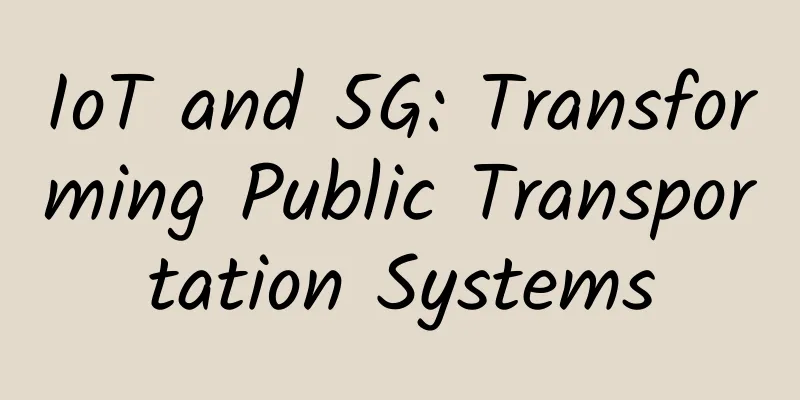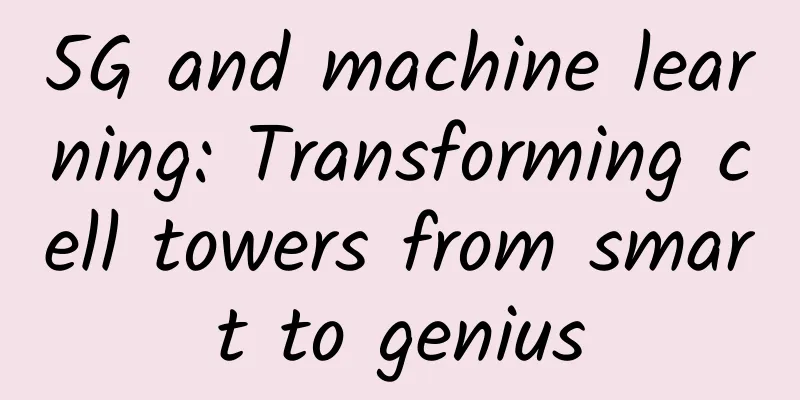IoT and 5G: Transforming Public Transportation Systems

|
Smart cities collect data from different connected sensors and electronic devices. The development of smart cities relies on the Internet of Things (IoT), Information and Communication Technology (ICT) and strong connectivity. The fifth generation (5G) of wireless mobile communications provides an advanced communication network that connects everything. 5G is an essential component of smart city development. It provides the communication infrastructure required for different smart city projects. Transforming public transportation is one of the main goals of smart city development. In this blog, we highlight the need for smart public transformation systems, the role of 5G and IoT in it, environmental benefits, real-life examples, and future aspects. The need for public transport transformationThe traditional public transportation system is not efficient and the management is not professional enough. People have to wait for hours at the bus station and often find that the bus they want is full. Due to the increase in population and limited public transportation, people think that taking public transportation has become a nightmare. Despite waiting and traveling in crowded buses, they are late to their destination. With these issues in mind, transportation authorities in various countries are working hard. They are now relying on smart technologies such as the Internet of Things and 5G to provide a robust public transportation system. 5G and IoT are game-changers for public transportation systems5G is the fifth generation of mobile networks that can connect almost anything around the world. It revolutionizes smart cities due to its enhanced connectivity, speed, and latency. It can transmit data at speeds of around 10 Gbps with latency as low as one millisecond. With 5G, we can transmit data instantly. 5G applications are not limited to providing faster Internet for smartphones, but also play a key role in the next generation of intelligent transportation systems. On the other hand, IoT is a network of interconnected devices that can communicate and exchange data. It can transform transportation systems by transforming ordinary vehicles into data-driven smart assets. We can embed sensors, IoT devices, and GPS systems in buses and trains to connect systems and transmit data. The collaboration between IoT and 5G is a basic requirement for the development of smart cities and can create miracles for people's quality of life. What is a smart public transportation system?A smart public transport system is a connected solution that allows passengers to enjoy their journey easily and conveniently. The main elements of a smart public transport system include 5G, cloud computing, smart bus stops, smart buses, and remote users using mobile or web applications. Users get real-time bus schedules and trajectories, allowing them to book seats in advance and reach the bus stop on time. They can build their own profile on the mobile app to choose from different packages and discounts. Their accounts are also linked to their bank or credit cards, and fares are automatically deducted. The smart bus stop also displays all the information on the screen for the convenience of passengers. All these systems are connected through 5G, IoT and cloud computing to ensure the high capability, accuracy and durability of the system. The benefits of transforming public transport systemsThe synergy of 5G and IoT brings numerous benefits to public transportation. The most interesting ones are discussed here: 1. Cooperation with smart parkingSmart public transport systems can also collaborate with smart parking solutions. When public transport administrators get smart parking opportunities, they can park their buses easily. They can book parking spaces online and pay for parking. Moreover, they can also see if another bus is parked or departed through a mobile app and can manage the routes accordingly. In addition, the combined data from both systems enables in-depth analysis of traffic patterns, providing statistics on areas requiring high mobility, parking spaces and the number of buses. This information therefore contributes to the development of smart infrastructure. 2. Smoother commutingWith IoT and 5G, we can design a smart public transportation system. A smart bus tracker mobile app allows users to view available buses or trains on their route. They can find and book them through their mobile phones without having to look for them in person. Not only that, they can also pay their fees online on a weekly, daily or monthly basis at their convenience. Students can also get different discounts and packages to make their public transport experience quite reasonable and suitable. 3. Real-time updatesIoT provides real-time monitoring, allowing users to track the buses they have booked. With GPS tracking and real-time estimates, they can monitor the time it takes for the bus to reach the nearby stops. Hence, they don’t have to wait for long to reach the stops. 4. Seat reservationOne of the major problems of public transport is the lack of seating. Passengers continuously stand in stifling conditions, leading to fatigue, stress and exhaustion. Even due to close interaction, the chances of airborne disease transmission increase. With the help of smart public transport system, you can book your seat online and find bus schedules and routes easily. You can find your seat easily without any hassle and no one will be allowed to board the bus if the seat is full. 5. Traffic managementWhen there is a strong and convenient public transportation system, people prefer buses to riding individually. It saves money and reduces traffic congestion and fuel consumption. Also, we can manage the demand of passengers by releasing buses according to the number of bookings. Passengers will not stay too long at the bus stop to ensure all seats are occupied and passengers do not need to stand on the bus. Environmental benefits of 5G and IoT synergy in transportationThe synergy of IoT and 5G contributes positively to smart public transportation systems and plays an important role in creating an eco-friendly environment. The environmental benefits are: 1. Traffic congestionThe main reason for revolutionizing the public transportation experience is to reduce traffic congestion. Buses and trains can carry more people and take up less road space. 2. Greenhouse gas emissionsAccording to a report by UCLA, public transportation can help reduce greenhouse gas emissions by up to 45% compared to private cars. Therefore, it is imperative that authorities commit to building a strong public transportation system. 3. Environmentally friendly driving assistanceSmart public transportation systems provide drivers with real-time feedback on their driving behavior, such as speed, acceleration, and tickets. The monitoring data encourages them to adopt environmentally friendly practices, thereby reducing fuel consumption. 4. Air pollutionSmart public transport systems help improve air quality by reducing the number of vehicles on the road. They must be implemented in areas with high air pollution. Real-life examples of smart public transportation systemsOne of the best examples of a smart public transportation system is Seoul, South Korea. Their subway system has a smart payment and reservation system, Wi-Fi, 5G, and virtual assistance. They have climate-controlled subways with seat heaters. Also, the stations have digital terminals through which passengers can look up bus routes and schedules. To provide passengers with a wonderful experience, the station has a virtual grocery store that looks like real store shelves with images of products and prices. Each product has a sign with a QR code, so buyers can shop by scanning the product and have their order delivered to their pre-booked address. Another breakthrough is the launch of a mobile app for public transportation users by the New York Metropolitan Transportation Authority (MTA). The app is currently undergoing BETA testing to provide the best transportation experience. The app's key features include real-time service reminders, schedule scheduling, favorite route saving, real-time bus tracking, trip booking, etc. With this app, passengers can book public transportation with just one click, thus helping to improve the public transportation system. The next generation of smart public transportationIn the future, we can see the integration of advanced technologies in smart public transportation systems, including artificial intelligence, holograms, virtual assistance, augmented reality, etc. In addition, 5G is being upgraded to 6G, providing stronger connectivity, frequency, and sustainability. Integrating these technologies will do wonders to provide commuters with the best experience. SummarizeOne of the major needs to deal with the hassles of daily life is to travel. Public transportation has become one of the most common modes of commuting due to its affordable price. 5G and IoT are major assets to revolutionize the public transportation system. 5G provides strong internet connectivity, while IoT allows connecting different IoT devices and sensors. Smart public transportation systems provide citizens with a smoother commuting experience. With real-time updates and monitoring, they can book bus seats and reach the bus location on time. Smart public transportation systems are affordable and convenient for passengers and help reduce traffic congestion, pollution, and daily hassles. |
>>: Web3.0 Technology: Unlocking the Future of the Internet
Recommend
IPv6 Security Thinking: Risk Analysis of Recursive DNS in IPv6 Networks
DNS (Domain Name System) is an important core inf...
Discussion on the Application of SDN in Wide Area Network
Internet industry application trends and problems...
Traditional database upgrade practices under the cloud-native evolution trend
1. Overview of Cloud Native Databases 1. Cloud co...
DogYun customized classic cloud, Hong Kong VPS annual payment 168 yuan
DogYun is a Chinese hosting company founded in 20...
[Black Friday] Justhost has a 30% discount for a limited time, 22 data centers in Russia, the United States, Singapore, etc. are available
Justhost.ru launched a Black Friday promotion yes...
Unified, standardized, and intelligent, Borei Data OneAlert helps reduce costs and increase efficiency in operation and maintenance
With the cloudification of IT infrastructure, the...
Huawei fully supports Chinese operators in building China's 5G
This morning, the Ministry of Industry and Inform...
With the rapid development of 5G, operators have drastically cut marketing expenses. How can agents survive?
Relying on a large number of agents, China Mobile...
DogYun New Year Promotion: 30% off on Elastic Cloud/20% off on Classic Cloud, starting from 16 yuan/month, top up 100 yuan and get 10 yuan free
The Lunar New Year is here, and DogYun has launch...
2017 Asia Pacific CDN Summit: Lianyu Yitong's "SD-WAN+" creates the future with speed
The Internet is made up of multiple networks, and...
China Mobile's operating revenue in the first quarter of 2021 was 198.4 billion yuan, a year-on-year increase of 9.5%
[[394900]] China Mobile today released its main o...
The data of tens of millions of JD.com users are suspected to have been leaked. Human greed has given rise to the "data black industry".
[[188856]] Recently, a heavy "bomb" app...
Easy-to-understand network protocols (TCP/IP overview)
My recent work is related to network protocols, w...
5G Thinking | Moderately Advance 5G Network Construction
Network construction is the cornerstone of 5G com...
Cartoon | IPv6 makes every grain of sand under your feet unique
I am an ordinary grain of sand in the vast sea of...









